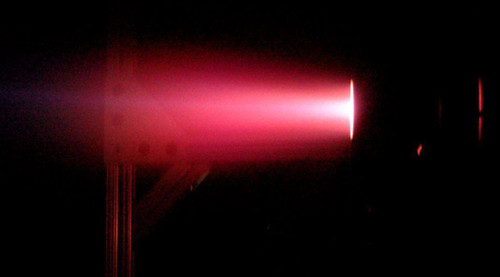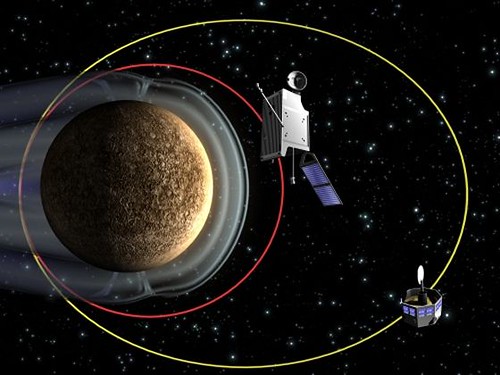
14 month epic saga by Lockheed and USAF experts to save the first $1.7 billion Advanced Extremely High Frequency satellite after it failed to reach proper orbit following launch may have been necessitated by a piece of cloth left in a fuel line.
[Washington Post – 03/17/2012]
North Korean plans to launch satellite meet with widespread criticism.
[The Telegraph – 03/17/2012]
Azerbaijan minister of Communications and Information Technologies expects the country’s needs for satellite communications to increase four-fold, given the mountainous terrain of much of the country.
[Trend – 03/17/2012]
LightSquared files opposition to FCC’s proposal to terminate the company’s authority to launch a nationwide network using the same frequencies as its mobile satellite service, claiming that 7 years of support for the plan over two administrations led the company to invest over $4 billion in the project, and termination leads to regulatory uncertainty that discourages needed investment in the nation’s wireless infrastructure.
[Market Watch – 03/16/2012]
New Boeing contracts with Asia Broadcast Satellite and Satellites Mexicanos feature the first all-electric commercial satellites that use light-weight xenon-fueled ion thrusters to cut satellite weight and launch costs.
[Aviation week – 03/16/2012]
Russian government to intentionally guide the large Express-AM4 telecommunications satellite, which was launched into useless orbit last August, into controlled atmospheric descent beginning March 20.
[Space – 03/16/2012]
Sprint terminates contract with LightSquared.
[CNN Money – 03/16/2012]
Head of National Broadband Plan talks about team’s successes, and the difficulty with finding spectrum for broadband illustrated by difficulties of LightSquared.
[Telecompetitor – 03/16/2012]
Globalstar VP says spectrum issues for national broadband capacity will be solved by engineers, not lawyers.
[Satellite Today – 03/16/2012]
Originally intended as “gap-filler” until now defunct TSAT became operational, WGS satellite program has become model of efficient satellite procurement as USAF orders continue, with 10 satellites now on order.
[Aviation Week – 03/16/2012]
Ireland’s national broadcaster, RTE, chooses Eutelsat’s KA-SAT for its unique approach to ensure that all homes in the Irish Republic will benefit from free reception of the RTE public service television and radio channels.
[SatNews – 03/16/2012]
Glowlink wins contract to provide spectrum-monitoring equipment for the U.S. National Oceanic Atmospheric Administration satellites.
[Satellite Today – 03/16/2012]
NovelSat modems, using technology aiming to increase satellite bandwidth capacity by 20 percent to 55 percent more than current DVB-S2 technology, are approved by Intelsat for use on its transponders.
[Satellite Today – 03/16/2012]
Astrium Services signs new multi-year contract with the French MoD’s Joint Logistices and Supply Agency to continue providing private satellite communications services to French forces deployed overseas.
[SatNews – 03/15/2012]
KVH is selected as preferred satellite communications solution provider for independent ship manager V Ships and will deliver mini-VSAT enhanced data applications to its fleet of more than 1,000 vessels.
[Satellite Today – 03/15/2012]
First global high-resolution map of boundary between Earth’s crust and mantle is produced based on data from ESA’s GOCE gravity satellite.
[SatNews – 03/15/2012]
Turnkey Satellite Uplink facility in North Platte, Nebraska constructed within four weeks of permit approval for major satellite internet provider by Oldcastle Precast using modular pre-cast building.
[PR.com – 03/15/2012]
DISA nears end of FCSA commercial satellite services build-out.
[Defense Systems – 03/15/2012]
Space Systems/Loral provides on time delivery of NASA propulsion system for moon exploration mission.
[Space Ref – 03/15/2012]
New DARPA Space Enabled Effects for Military Engagements program seeks to employ quickly deployable, disposable small and inexpensive satellites to meet need for military hotspots speedily.
[PC Magazine – 03/15/2012]
Ka-band’s surprising revenue leader is DirecTV.
[Space News – 03/15/2012]
Norsat’s 2011 full-year sales spike 90 percent despite satellite slump.
[Satellite Today – 03/15/2012]

Dish Network’s Hopper whole-home DVR system, introduced at CES earlier this year, is now available to its customers
[CED Magazine – 03/15/2012]
U.S. Army anticipates purchasing all of its satellite communications systems and support services through CTS, a single, Multiple-Award Task-Order Contract with up to ten awardees.
[Gov Win – 03/14/2012]
NASA’s Robotic Refueling Mission experiment aboard International Space Station demonstrates that remotely controlled robots and specialized tools can perform precise satellite-servicing tasks in space.
[SatNews – 03/14/2012]
Eutelsat reorganizes names of its Satellites, unifying them under the company brand name.
[Satellite Today – 03/14/2012]
Globalstar, reporting positive quarterly adjusted EBITDA for the first time in four years, is expected to become world’s first LEO-based MSS provider with a second-generation constellation.
[SatNews – 03/141/2012]

Elwing Company, through its European affiliate Elwing Europe, announces agreement with Swedish satellite manufacturer OHB Sweden to partner in development of advanced platform technologies for satellites.
[SatNews – 03/14/2012]
Satellite contracts won by Boeing and SpaceX provide boost to California’s South Bay economy.
[Los Angeles Times – 03/13/2012]
Kratos is selected by Intelsat to extend its EPOCH Integrated Product Suite-based Fleet Control System to operate the Intelsat 27 satellite, currently under construction.
[SatNews – 03/13/2012]
Australian Satellite Communications deploys iDirect hub to support new partnership with Daltron, bringing satellite capabilities to Papua New Guinea-based ISP.
[Market Watch – 03/13/2012]
A new, dedicated VSAT Maritime Broadband Solutions Centre will be opened May 1, 2012 in Singapore by AST to specifically serve the Asia Pacific region.
[Satnews – 03/13/2012]
Verizon Mobile Satellite Services offers backup services and enhanced disaster recovery, using 20X20 ft. air shelters that can be set up in less than 20 minutes and provide protection from extreme weather for up to 12 people.
[Market Watch – 03/13/2012]
SES Government Services to be featured in Business Update on Aerospace and Defense on the Discovery Channel on March 21.
[Market Watch – 03/13/2012]
SES and ITC Global renew capacity deal to provide connectivity to rigs and vessels throughout the Gulf of Mexico region.
[SatNews – 03/13/2012]
SpaceX signs contracts with Asia Broadcast Satellite and Satelites Mexicanos for two launches aboard SpaceX’s Falcon 9 rocket.
[SatNews – 03/13/2012]
Eutelsat and Es’hailSat select Arianespace to launch their EUTELSAT 25B/Es’hail 1 satellite in 2nd quarter of 2013 aboard Ariane 5 launcher.
[SatNews – 03/12/2012]
Diversified Communications Inc. selects TCS to provide mixed C- and Ku-band access to its TCS OS-IRIS offering hosted on Intelsat 14. [Market Watch – 03/12/2012]
Dish Network closes on purchases of DBSD North America and TerreStar, important to its broadband plans.
[Market Watch – 03/12/2012]
WBMSAT satellite communications consulting services
















